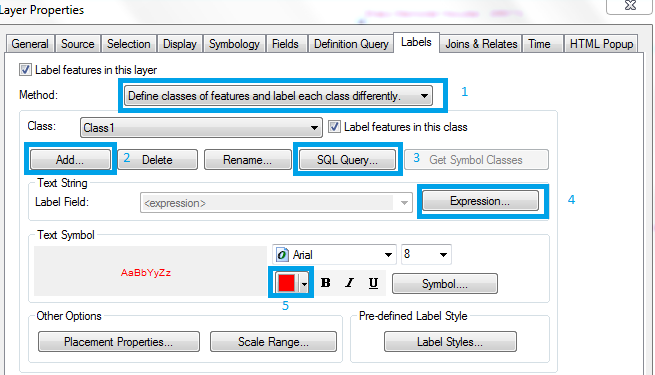- Home
- :
- All Communities
- :
- Products
- :
- Data Management
- :
- Data Management Questions
- :
- Python If Then label expression
- Subscribe to RSS Feed
- Mark Topic as New
- Mark Topic as Read
- Float this Topic for Current User
- Bookmark
- Subscribe
- Mute
- Printer Friendly Page
Python If Then label expression
- Mark as New
- Bookmark
- Subscribe
- Mute
- Subscribe to RSS Feed
- Permalink
I need to label some wells with their ID and the sulfate concentrations from multiple sampling events. I started by labeling the wells from just one event, I wrote a python expression that would label a well with its name and the sulfate concentration in red if its over 300,000. The expression has no errors but it labels all the sulfate concentrations in red regardless of the number. It also breaks up the label wherever there is a comma. I know I could do this in SQL, but eventually I need to add multiple sulfate concentrations to this label.
def FindLabel ( [Well_Nme], [Sulfate_9_2016] 😞
if ([Sulfate_9_2016]) >300000:
return [Well_Nme] +'\r\n'+ "<CLR red='255'>" + [Sulfate_9_2016] + "</CLR>"
elif [Sulfate_9_2016] <300000:
return [Well_Nme]+'\r\n'+ [Sulfate_9_2016]
- Mark as New
- Bookmark
- Subscribe
- Mute
- Subscribe to RSS Feed
- Permalink
You might like to "Define classes of features and label each class differently" from Layer Properties.
1. Choose the above method.
2. Add a new class. Define a class name.
3. Define a SQL query (Sulfate_9_2016 >300000)
4. Write the appropriate expression.
5. Choose appropriate symbology.

Think Location
- Mark as New
- Bookmark
- Subscribe
- Mute
- Subscribe to RSS Feed
- Permalink
If you want to stick with a script:
def FindLabel ( [Well_Nme], [Sulfate_9_2016] ):
lbl = [Well_Nme] + "\r\n"
if float([Sulfate_9_2016]) > 300000:
lbl = lbl + "<CLR red='255'>" + [Sulfate_9_2016] + "</CLR>"
else:
lbl = lbl + "<CLR red='0'>" + [Sulfate_9_2016] + "</CLR>"
return lbl